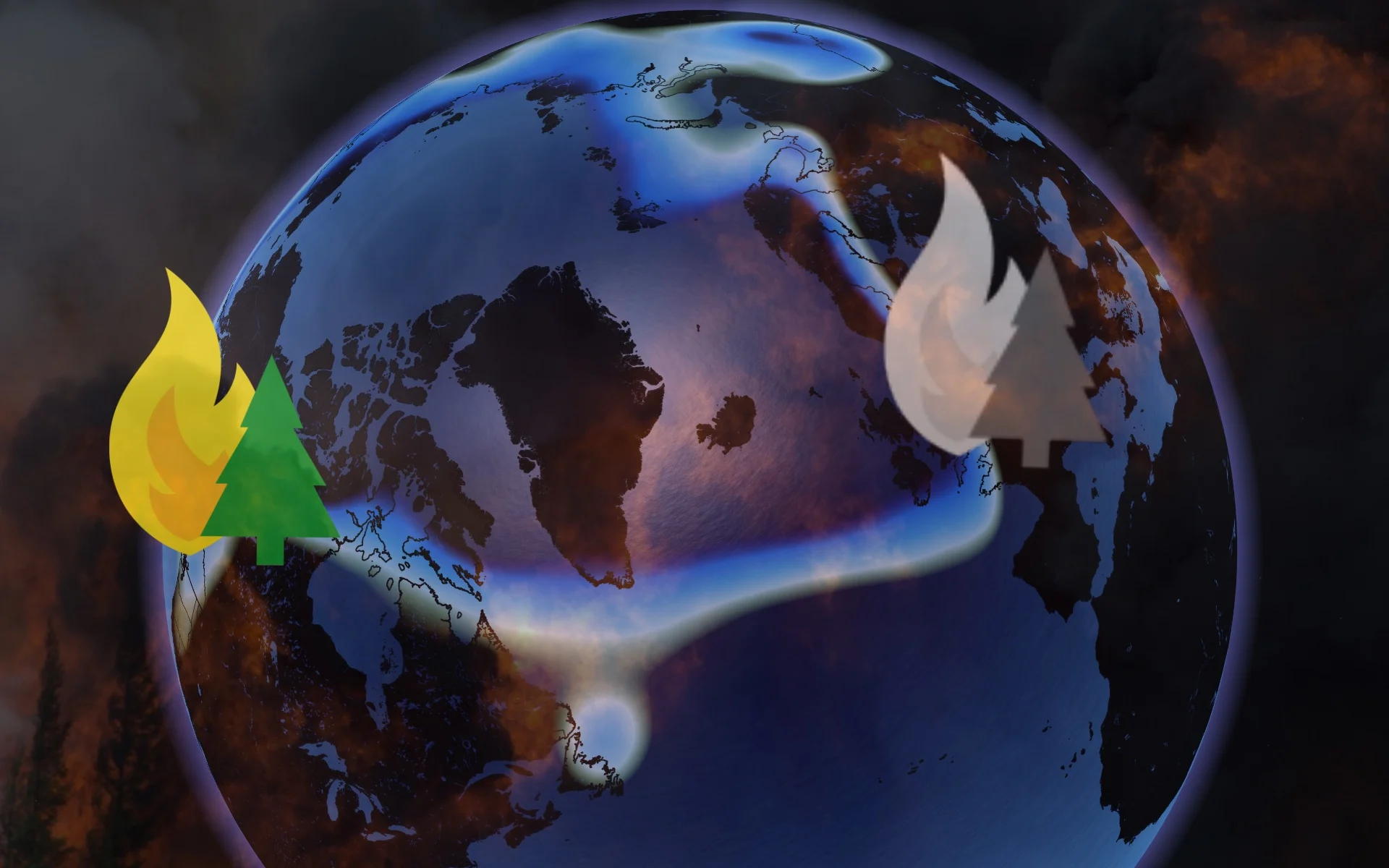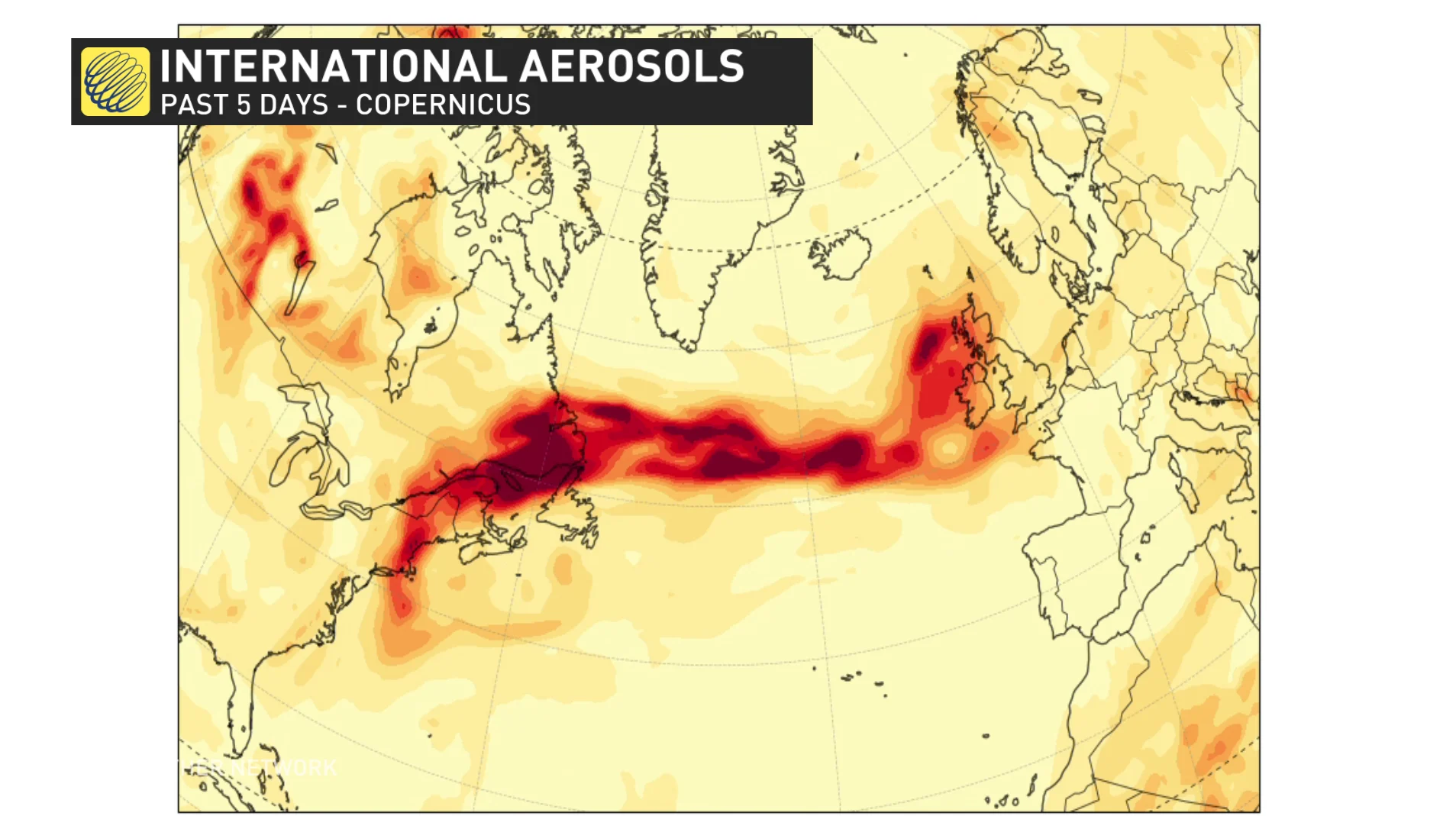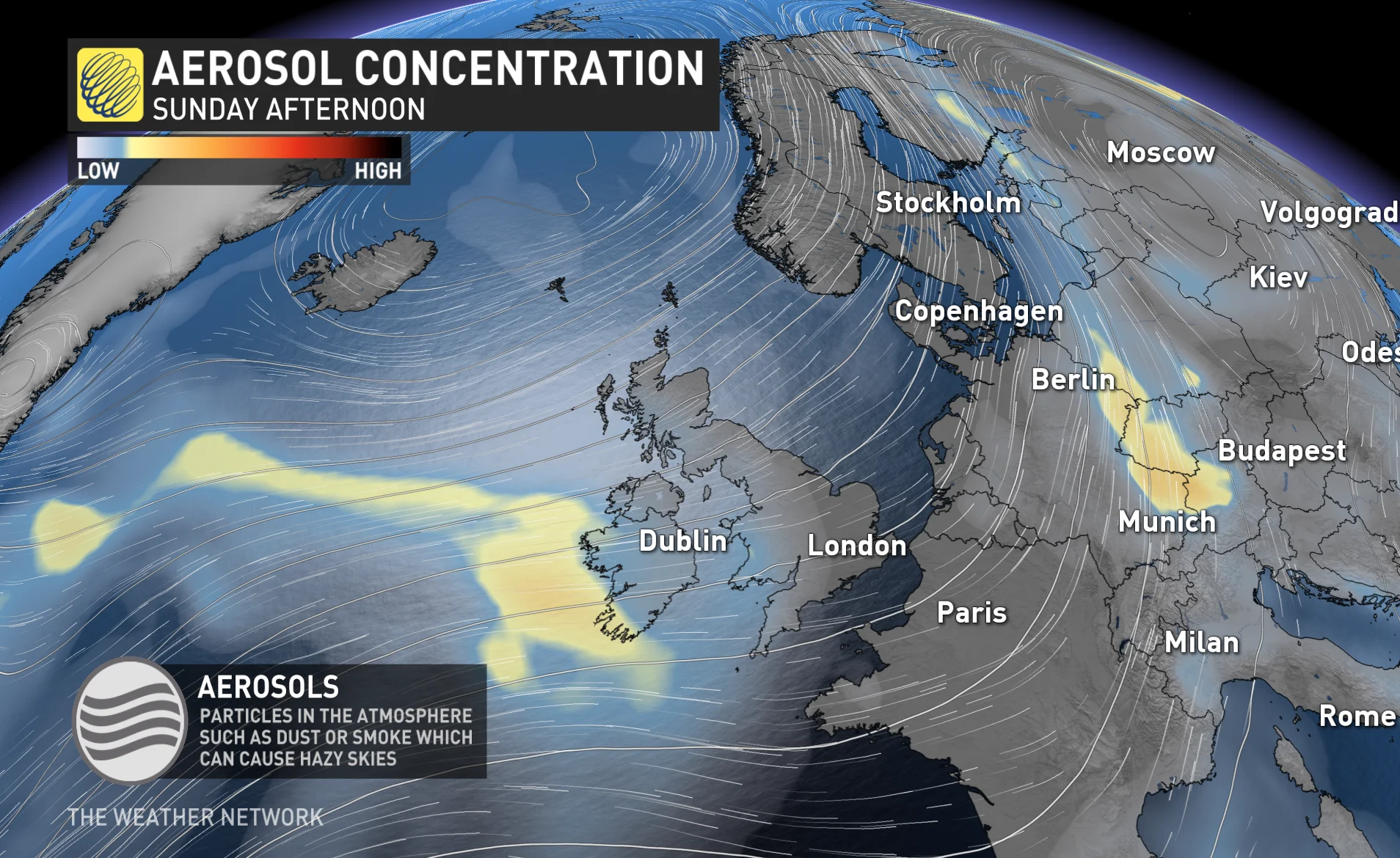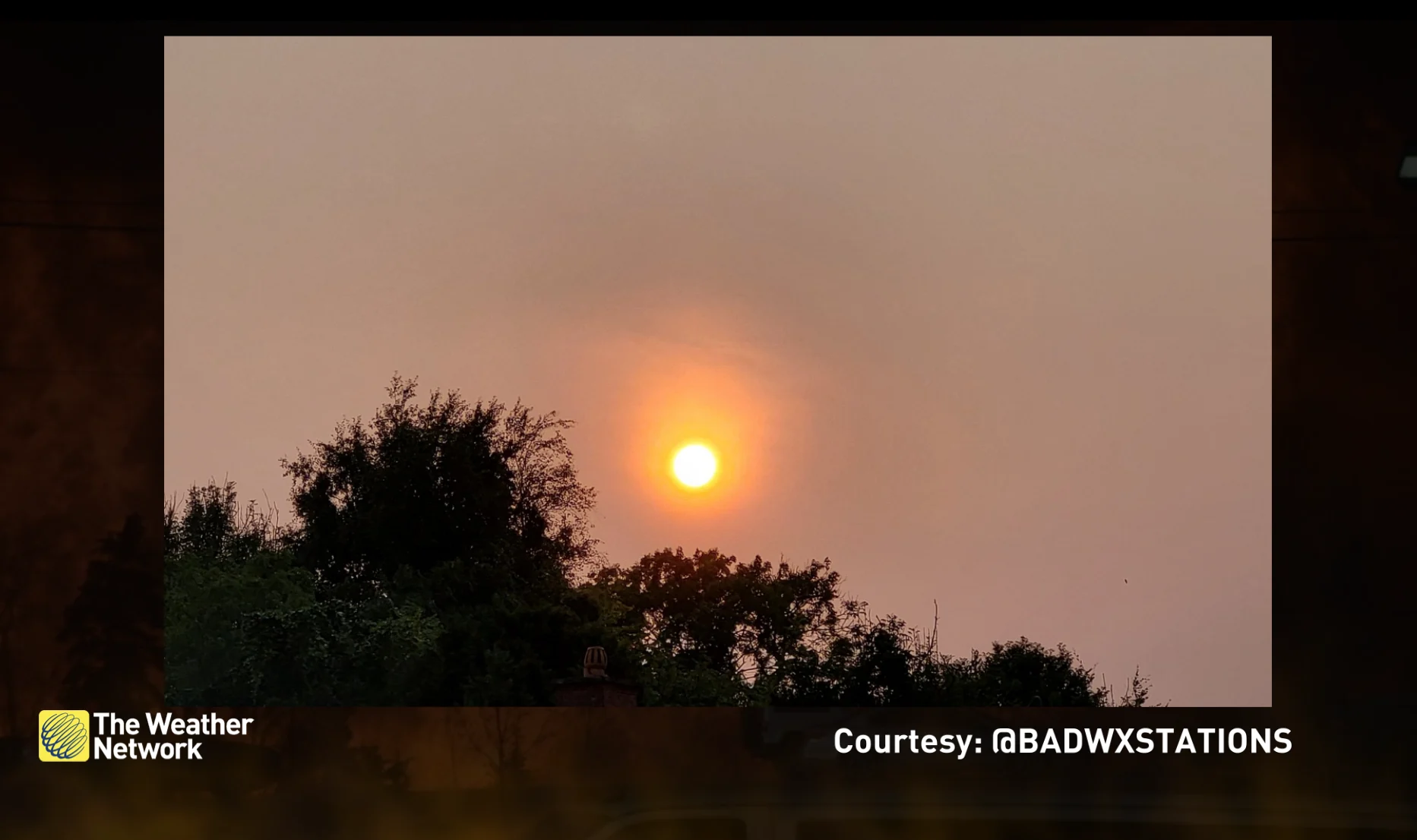
Canadian wildfire smoke hits European skies after travelling 4,000 km
Wildfire smoke from Canada has travelled more than 4,000 kilometres over the Atlantic Ocean to hit European skies this week, resulting in hazy sunsets and a significant increase in levels of particulate matter and aerosols
It took a week and more than 4,000 kilometres to do it, but wildfire smoke from Western and Northern Canada crossed the North Atlantic and reached the skies over parts of Europe this week.
As a result, hazy sunsets have been seen across Europe including Ireland.
CANADA'S WILDFIRES: Visit The Weather Network's wildfire hub to keep up with the latest on the active start to wildfire season across Canada.
It was reported that wildfire smoke from Canada has been trekking across the North Atlantic since Aug. 10, finally hitting Western Europe on Aug. 17. The result, aside from the picturesque sunsets and moon rises, has been a vast increase in levels of particulate matter and aerosols such as smoke particles in Ireland, the United Kingdom, France and Scandinavia.

As a result of the wildfires currently burning in Canada's West and North, the Northwest Territories, Saskatchewan and Manitoba have already recorded their highest wildfire carbon emissions for August in the GFAS dataset, according to according to the European Union’s Copernicus Atmosphere Monitoring Service (CAMS).
That amounts to just more than 80 megatonnes of total estimated emissions for Canada in August, approaching the 2023 tally in which the country experienced its highest carbon emissions for the month since 2003, CAMS added.
"As a result, 2024 is already one of the most extreme years of the last two decades for Canada, and is set to be second only to 2023 in terms of emissions," CAMS said.

With the amount of active wildfires in the West, it should come as little surprise that B.C. and Alberta led the country in July in terms of severity and the amount of carbon emissions generated from the blazes.
In August, the number of fires and emissions rose exponentially in Northwest Territories following a heat wave across the region at the beginning of the month.
According to CAMS, the estimated total of wildfire carbon emissions in Northwest Territories Jan. 1 to Aug. 19 exceeds 70 megatonnes, trailing 2023 and 2014 for the annual total fire emissions for the territory.

Elsewhere in Canada, 2024 is second only to 2023 in terms of annual total fire emissions for B.C. and Alberta. In Saskatchewan, carbon emissions have been pegged at more than 11 megatonnes for August, while Manitoba emissions are currently at more than five megatonnes.
In Ontario, which has had below normal wildfire activity so far this year, is currently estimated to have elicited 0.6 megatonnes of carbon emissions, its third highest in the CAMS database, behind 2021 and 2017.
"The wildfires have been affecting air quality, both locally and farther afield. Long-range transport of the smoke has reached Eastern Canada and the east coast of the United States, bringing hazy skies and contributing to reduced air quality in major cities across the region," said CAMS.
Jet stream played a role in carrying the wildfire smoke
The jet stream is the upper-level ribbon of winds that direct our storm systems, working to separate our cold and warm air. But, it can also transport smoke from wildfires.
Over the last five days, the jet stream has carried particulate matter from fires in Northern Canada all the way to Europe. People chimed in on social media with posts showing smoky sunsets in Ireland, approximately 4,000 kilometres away.
The jet stream will bring more smoke into Europe over the next five days, but it will not be quite as thick this time around.











